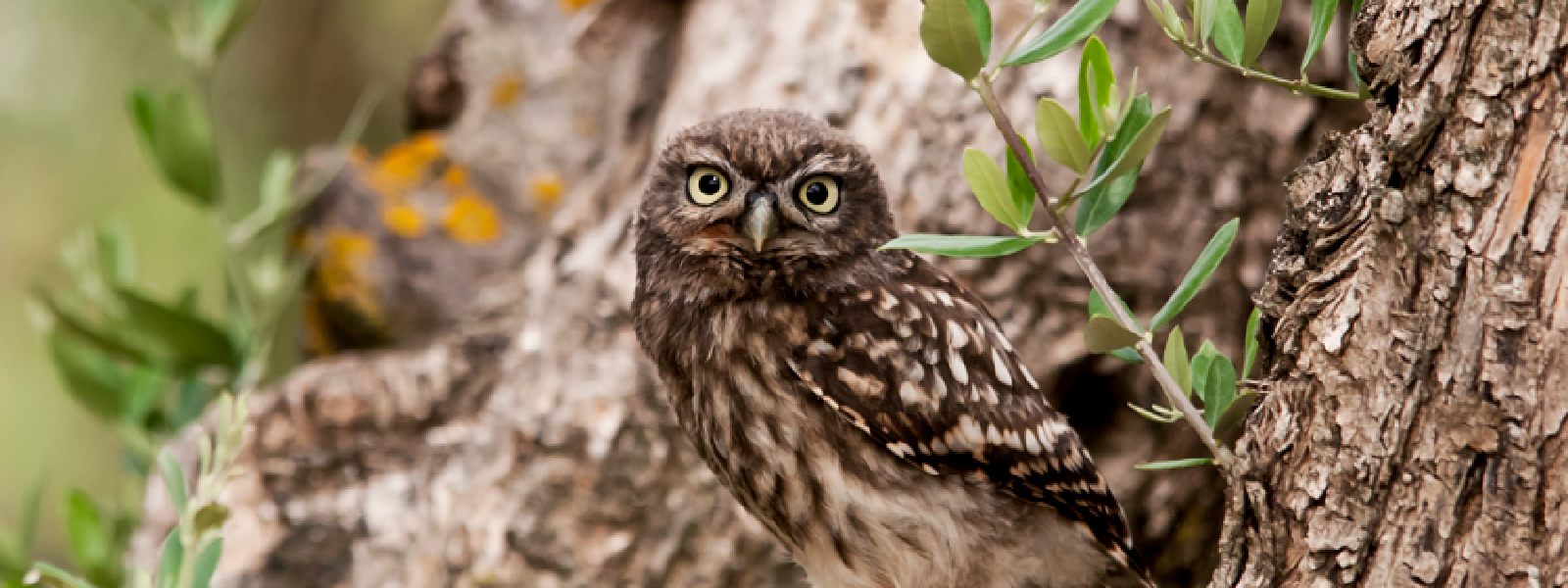Anyone who visits Herdade do Esporão knows what to expect concerning wine tourism, wines, olive oils… but while calmly enjoying a wine tasting or the garden’s cooler temperatures, there’s a wild world beyond! We call this type of wilderness the Mediterranean landscape, here dominated by a very Portuguese feature, the holm oak ‘montado’ which includes biodiverse grasslands and smaller patches of woodlands. It is just in this delicate and dynamic balance between the forested and farmed areas, namely the vineyards and olive groves, that we can follow the daily drama of life on the estate, beyond that which we are normally used to.
LOOK UP… AND DOWN
During the hot days of August, we often prefer the shaded retreats for escaping the blazing sun and hot air, but while we seek shelter, there are other species roaming around… it is the rearing season for many birds and there are busy parents flying in search of healthy meals for their young. Also with a little luck, we can see the visiting osprey pick out a carp from the reservoir or the timid and rare black stork probe for frogs in wetlands.
These are just two examples of how water plays a key role in the link between production and nature conservation. Without water it wouldn’t be possible to have the present extension of farmland, nor to achieve the levels of environmental balance we are aiming for. These are made possible by conserving water in its natural forms, i.e., in the reservoir, wetlands and streams of the Caridade riverine basin and the river Degebe, a tributary of the Guadiana that borders the estate to the west and south. By protecting our water resources we guarantee the viability of production within the limits of sustainability and, at the same time, create habitats and conditions that ensure wildlife to thrive and develop.
In addition to the various species of birds you can see at the reservoir and south of the dam wall, particularly at sunrise and sunset, there are other surprises at closer quarters. By the reservoir you can often see animal tracks and the leftovers of red swamp crawfish, which is the work of a family of otters which has been flourishing on the estate. These are very clever and elusive animals, who keep a very low profile; however, those with a keen eye can try their luck during twilight, sometimes the younglings make an appearance, their love of playtime makes their presence slightly more noticeable.
Those who explore the outer reaches the Esporão reservoir will find, both in the far north and south of the dam wall, wetland areas with bulrushes, reeds, willows, oleanders and ashes, where you can sense a very common aroma of the Alentejo summer – different types of mint. This plant family includes easily recognizable species like pennyroyal, round-leafed mint and Hart’s pennyroyal, which are easily found by the more alert. And if you have the eyesight of a lynx, you won’t find the famous feline but will discover other surprising things of the hopping and crawling variety.
In the wetlands and streamside galleries that shape the landscape, amongst the olive groves and the holm oak ‘montado’ woodlands, there are certain species that are very important in controlling potential pests, such as European and Mediterranean tree frogs, the Iberian midwife toad and the Iberian green frog. There are also rodent predators around, such as the Montpellier snake and ladder snake, as well as the cheerful fisherman that is the viperine water snake, which sometimes frightens those walking on the water’s edge, although completely harmless, despite its scary name.
BECAUSE AUGUST IS THE MONTH OF WATER
The month that represents the peak of summer in the Alentejo is crucial for us in terms of smart water management. When the vineyards are in their final productive phase, gradually entering the harvest stage and the olives are getting plumper, the demands made on water resources are at their peak. However, it is precisely biodiversity’s resilience that protects and preserves the Caridade reservoir, wetlands and streams, thus safeguarding production sustainability.
When we observe the flight of the Emperor dragonfly and willow emerald damselfly, we are seeing something more than a dance of organza wings, we are looking at the environmental safety of a glass of Verdelho or a drizzle of Cordovil olive oil. And when you return home, in the cool of the evening, drive slowly within the estate because the night shift has started and they’re coming to take care of our vineyards and olive groves. After spending the day hidden in shady areas, down by the water and the oldest trees, foxes, hedgehogs and, with any luck, little owls and tawny owls make their appearance. Many of these animals are often hit when caught in headlights, so, drive (extra) carefully and, after a day enjoying the Esporão experience, you may have discovered just a small part of our wild side.
